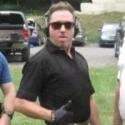
Originally Posted by
OrigamiAK

Have not heard Jeff Hall's lecture - any reference around to it?
Not sure how much I can post with regards to copyright concerns - full read here: https://www.swatmag.com/articles/finish_the_fight This is a good overview:
When my fellow Alaska State Trooper Randy Crawford called me, he’d just been in his second gunfight.
He was P.O.’d because he’d fired several shots from his AR at a range of ten yards and had missed completely. He wanted to know what he was doing wrong.
We kicked it around for a few minutes and found the problem: Randy was shooting on the move, trying to get to cover while firing at the goblin. Like most departments, we trained in the most cost-effective manner: plant your feet, pick your target, and shoot on command. However, the department also told us that if we got in a real gunfight, we should move to cover, too.
I told Randy that the next gunfight he got into, he should do what we’d trained to do—stand on his hind legs, put the front sight in the middle of the bad guy, and shoot until he couldn’t see him anymore. Six months later, Randy did just that. He fought the way he’d been trained and hit the guy five for five with a Remington 1100 loaded with 12-pellet Magnum buckshot … gimme an amen!
Jeff's lecture goes into more detail about the first two shootings and the training that preceded them. It was 2007 when I heard Jeff speak but IIRC, he thought that you could teach people to shoot well while moving but that almost no agency had the resources (time/money/ammo) to actually do it right. By right, I mean deliver it in the field in actual fight.




 Reply With Quote
Reply With Quote




 . Snarky and easily butt hurt. Favorite animal is the Cape Buffalo....likely indicative of a personality disorder.
. Snarky and easily butt hurt. Favorite animal is the Cape Buffalo....likely indicative of a personality disorder.
